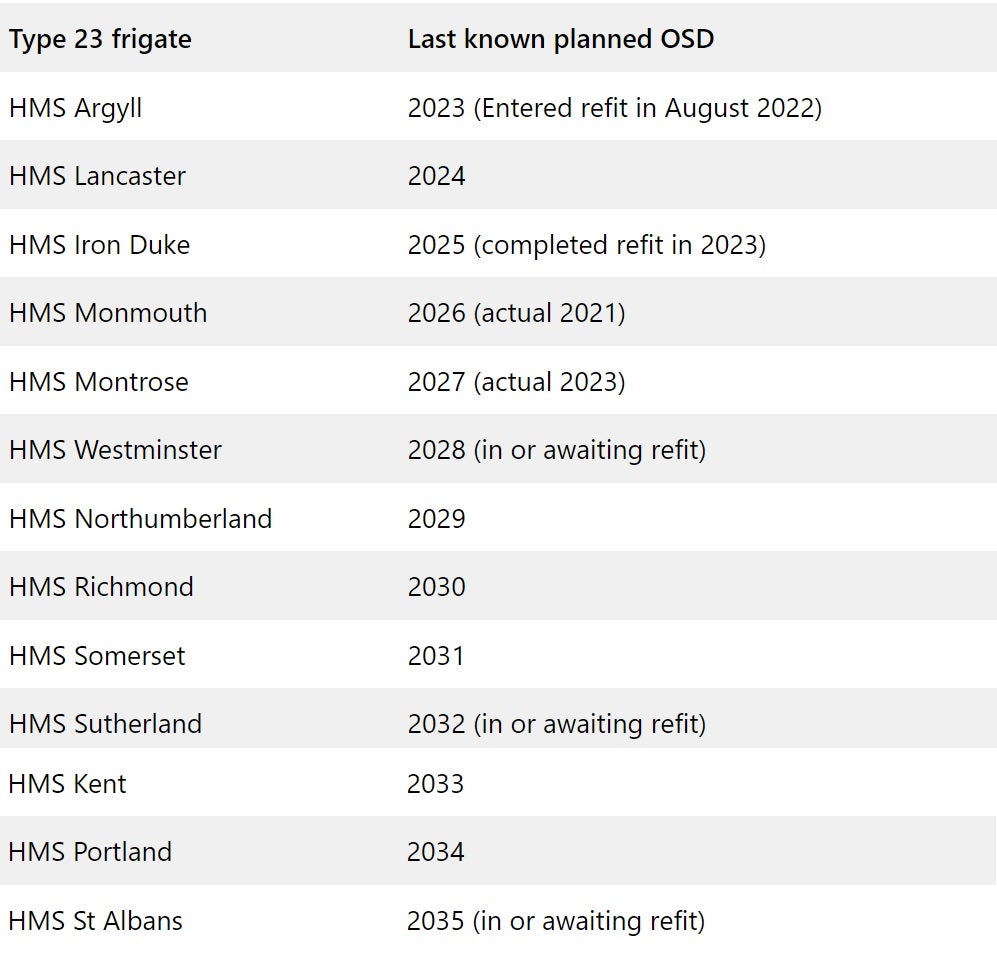
The UK Royal Navy’s Type 23 frigate HMS Sutherland has required around 600 structural inserts during the vessel’s extensive upkeep programme currently being carried out at Babcock’s Royal Naval Dockyard located inside HMNB Devonport.
The frigate is one of a number of Type 23 class undergoing service life extension (LIFEX), recertification, or upkeep work at Babcock’s frigate halls at Devonport. The material state of some Type 23 frigates has been questioned previously, with HMS Iron Duke requiring more than 1,000 structural inserts during its own upkeep process.
Structural inserts typically remove degraded or rusted sections of hull or the ship’s superstructure, ranging in size from a small hand-sized plate to large panels.
Arriving on-site in April 2021, HMS Sutherland is due to be removed from drydock in the coming weeks and delivered back to the Royal Navy in the Q3/Q4 timeframe. Among works carried out include the installation of four new diesel engines under the Power Generation Machinery Upgrade (PGMU) programme.
The ageing Type 23 frigates have served far beyond their expected service life, with LIFEX carried out across a number of vessels in an attempt to ensure fleet number continuity until the new Type 31 and Type 26 frigates begin to come online later this decade.
Other Type 23 frigates at Babcock’s facility include HMS St Albans, which will begin sea trials on 1 March, three months ahead of the vessel’s contracted date. HMS Argyll meanwhile is in the process of post dock work up and activity.
Later in 2024, HMS Northumberland will arrive at Babcock’s site in the middle of March, where it will rest in 5 Dock, followed in mid-June, when HMS Kent and head in to 7 Dock. Both vessels are scheduled to undertake the PGMU process.
During a media tour of Babcock’s facilities on 8 February, there was no mention or sight of HMS Westminster, one of the Type 23 frigates purportedly ready to be cut from the fleet due to its poor condition.
Final refurb for Type 23s as OSD nears
In a written UK parliamentary written response on 15 January, it was revealed that the UK Royal Navy had 11 Type 23 frigates ‘in service’ – of these, seven platforms were described as being ‘operational’.
The remaining four vessels – HMS Argyll, HMS Westminster, HMS Sutherland, and HMS St Albans – were either in or awaiting a refit process, vital to the recertification efforts intended to extend the type’s service life.

It was previously reported by Naval Technology that the overall length of time that a Type 23 frigate is spending in refit and refurbishment programmes is increasing, as the fleet ages and becomes more difficult to maintain. Each ship of the class was originally intended to have an 18-year service life before replacement, but this has been extended through a series of refits.
From 2011-2017 each of the then 13 Type 23 frigates underwent a LIFEX or refit period, with the duration of each programme ranging from 12 months up to 36 months. From 2018 onwards the figures increase, with the first three vessels to undergo earlier work returned to the shipyards for between 37-49 months.
In line with vessel class certification rules, the out-of-service date of warships can be extended for a maximum of six years following completion of each upkeep maintenance programme.
The cost to refit and maintain the ageing class is also a factor, with HMS Iron Duke’s 2023 refit costing more than £100m. By comparison, in the financial year 2023-24, £100m has been allocated for Type 23 refits and of this sum about £50m has been expended, according to official figures.







